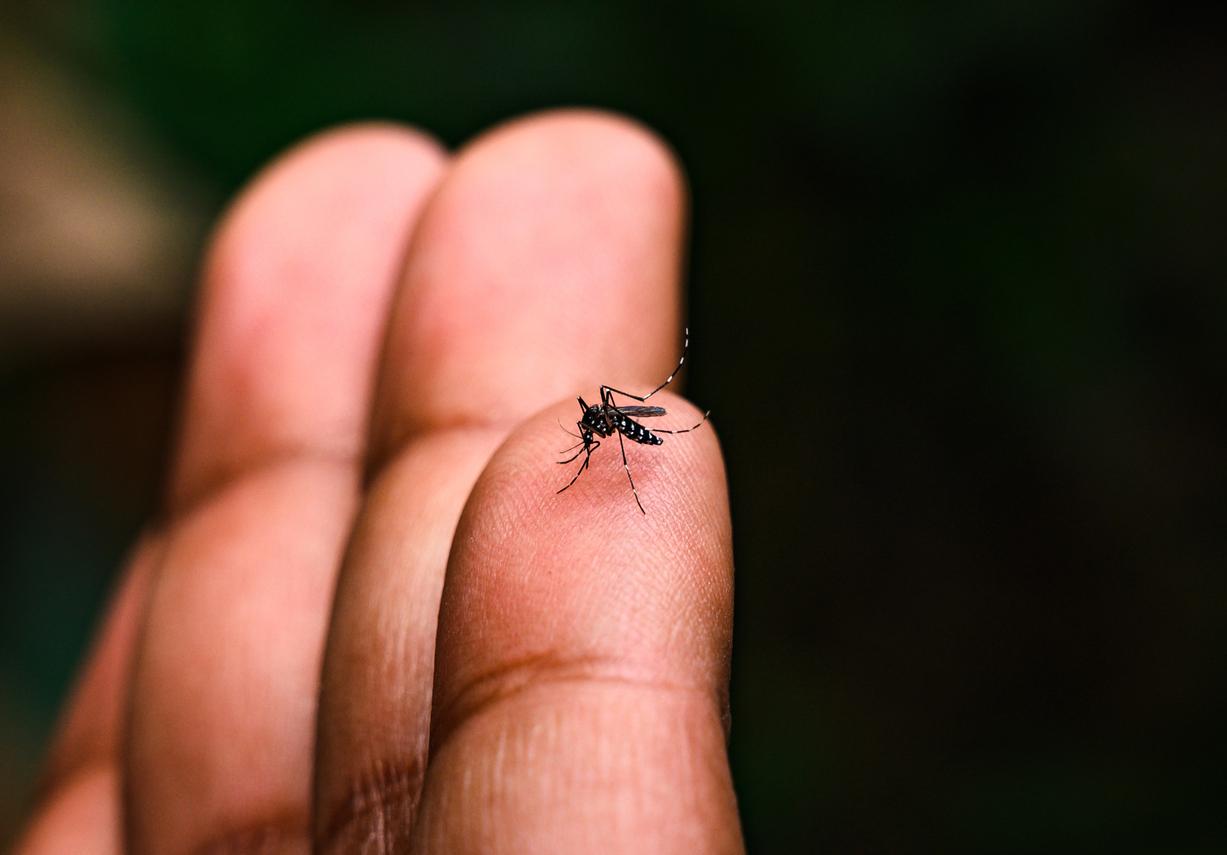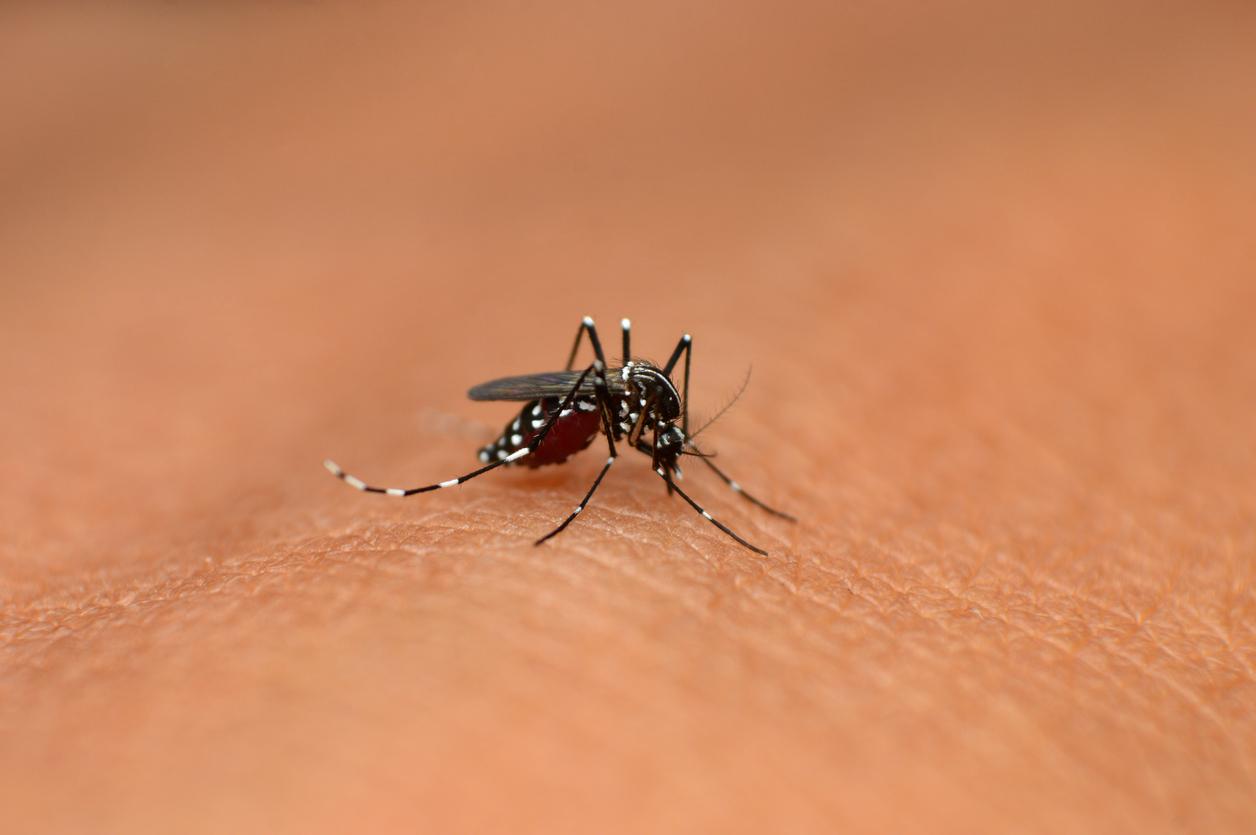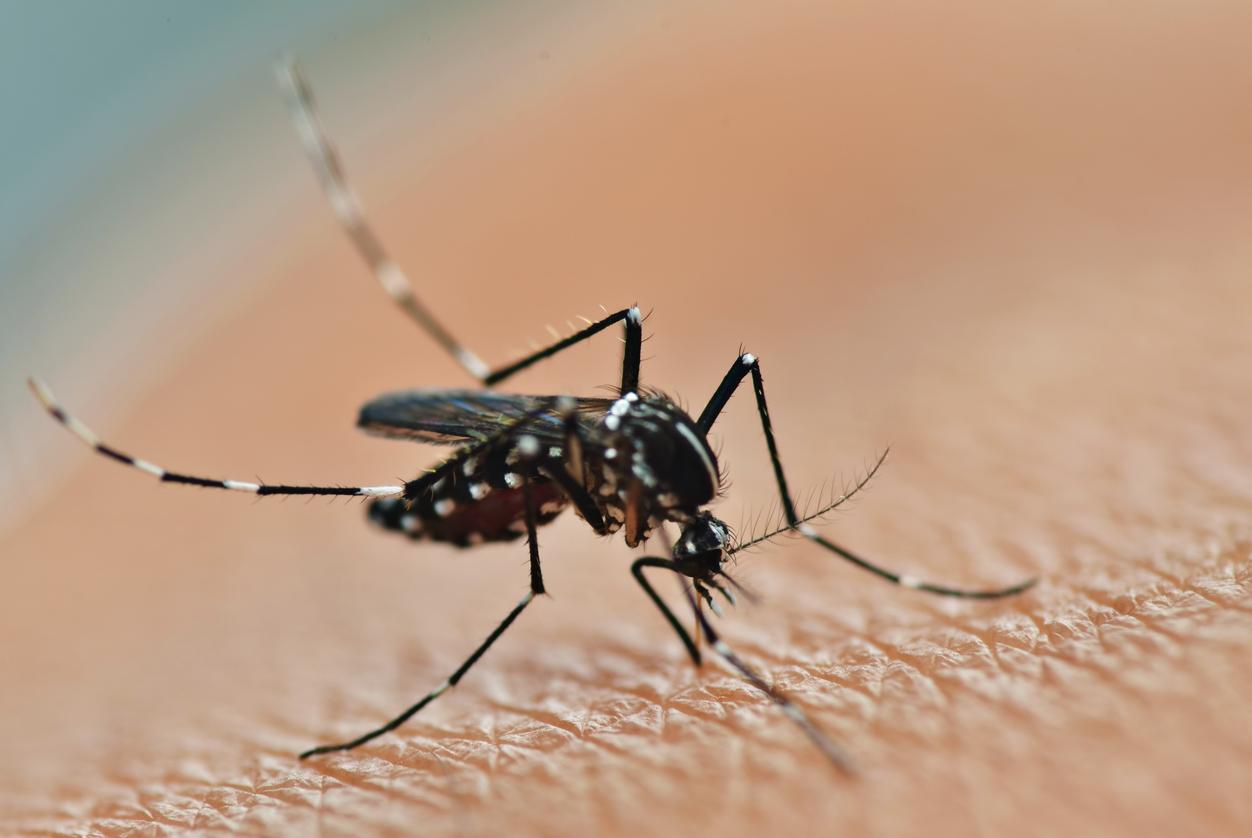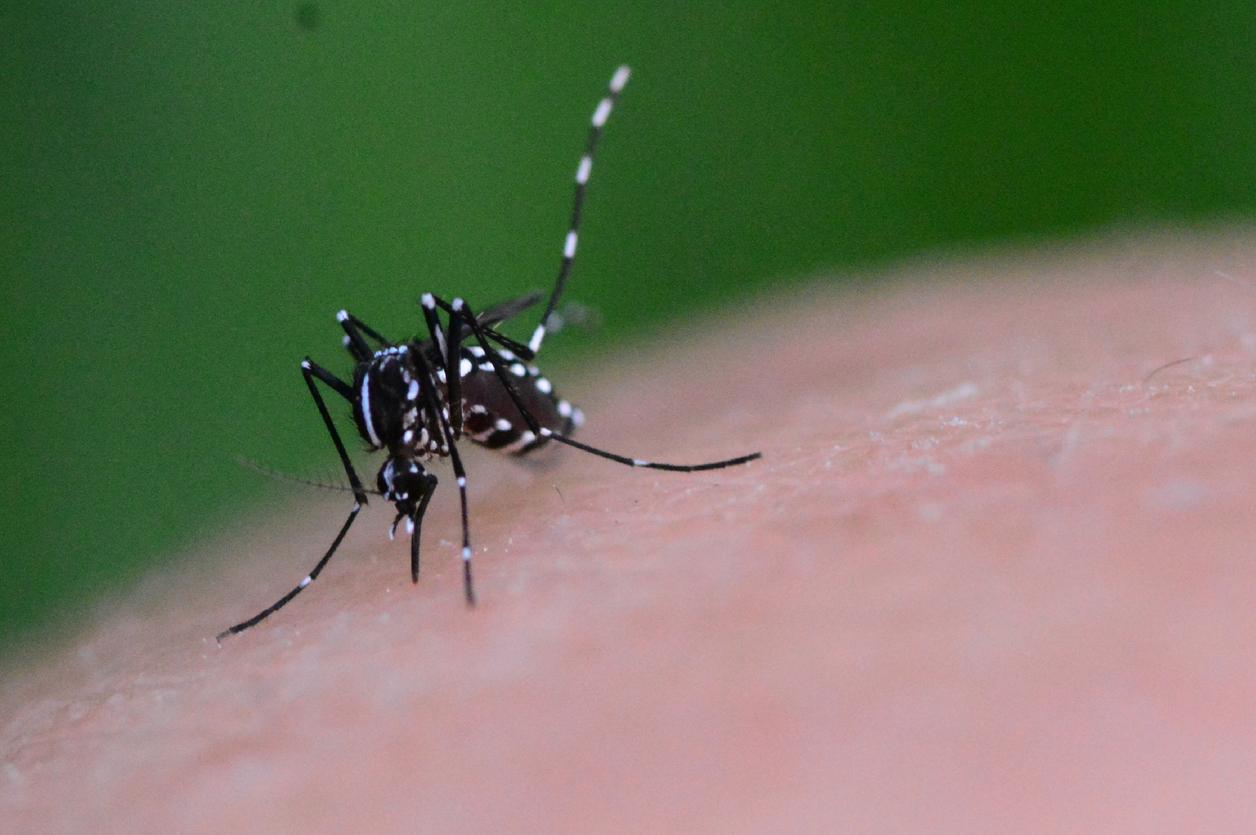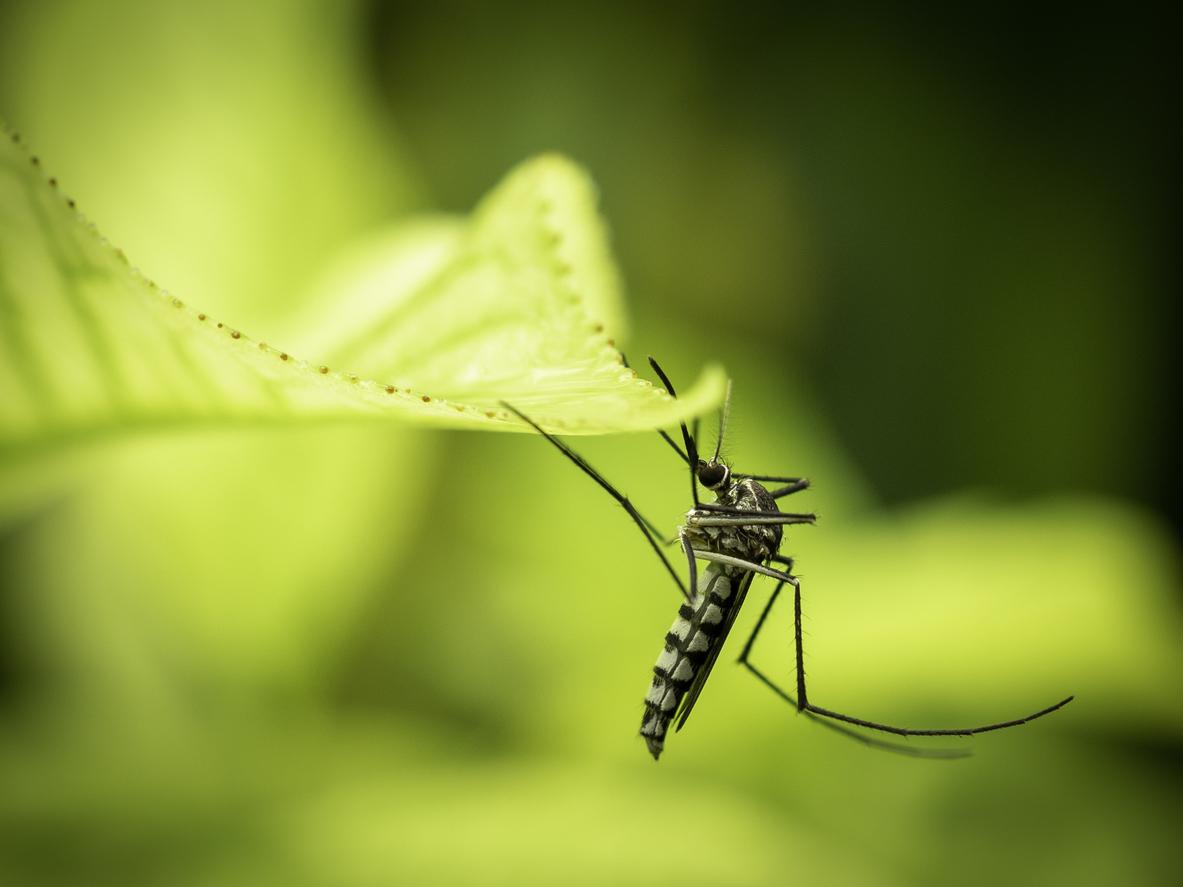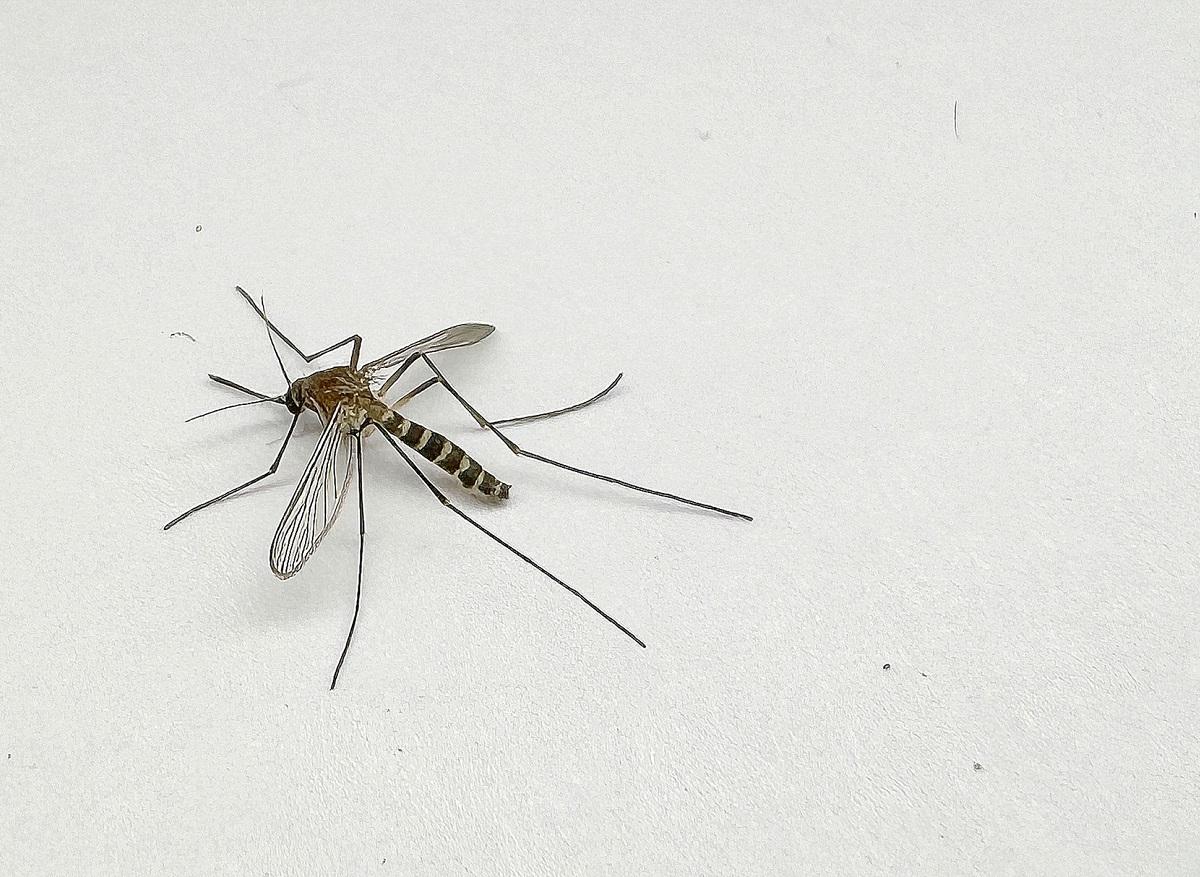The Ministry of Health announced on Monday the “reinforced surveillance” of the tiger mosquito which currently flies over 42 French departments, both to slow its progression and “to limit the risk of importation and circulation of viruses of which it can be the vector in metropolis”.

“Its ability to be a ‘vector’ of chikungunya, dengue or zika, makes it a priority surveillance target for health authorities and their partners during its period of activity in metropolitan France from May 1 to November 30.” the Ministry of Health announces this Monday the reinforced surveillance of the tiger mosquito which currently flies over 42 French departments, both to slow down its progress and “limit the risk of importing and circulating viruses for which it can be the vector in mainland France”.
The dengue epidemic on Reunion Island and the regular exchanges between this ultra-marine territory and the metropolis worry the government: “there is a risk of importation of this virus which could be at the origin of a start of ‘indigenous’ transmission cycle, it is that is to say cases of people stung and contaminated in metropolitan France “. Indeed, the tiger mosquito becomes infected by biting a sick traveler, carries the virus and transmits it secondarily to non-immune people during a next bite. Thus, an autochthonous transmission cycle is generated and can be at the origin of one or more epidemic foci.
42 departments in red vigilance, 20 in orange vigilance
In France, 11 indigenous cases of dengue were reported in Hérault in 2014, 7 indigenous cases of dengue in Gard in 2015 and 17 indigenous cases of chikungunya in Var in 2017. The risk is therefore real. Currently, thehe six departments of the Provence-Alpes-Côte-d’Azur region, as well as the southern half of France, are placed in red vigilance. The Hauts de Seine, the Aisne, the Hautes Alpes, the Hautes Pyrénées, Ariège, Lozère, Indre, Maine-et-Loire and Corrèze were also “colonized”, specifies the site. Overall, the colonization of French territory by the tiger mosquito is increasingly rapid and now concerns 62 departments (42 in red vigilance, 20 in orange vigilance).
Although less sunny, Ile-de-France is also concerned: “In addition to Paris, 4 departments are on orange vigilance: Val d’Oise, Seine et Marne, Essonne, Seine-Saint-Denis , where the tiger mosquito has been intercepted over the past 5 years “. Vigilance-Mosquitoes observes that in the vast majority of cases, the departments in orange change to red vigilance over the following years. “They therefore require special citizen vigilance, especially since they do not benefit from the entire system provided for by the anti-dissemination plan” provided for in the departments placed in red vigilance.
34 yellow departments under surveillance
At least 34 departments are placed in yellow vigilance and are the subject of an entomological watch specially dedicated to the surveillance of the tiger mosquito. “The rules of the anti-dissemination plan against dengue, Chikungunya and the Zika virus require the neighboring departments of another placed in red vigilance to be placed under surveillance, but certain regions have taken the initiative and wished to implement a surveillance plan with broader criteria “.
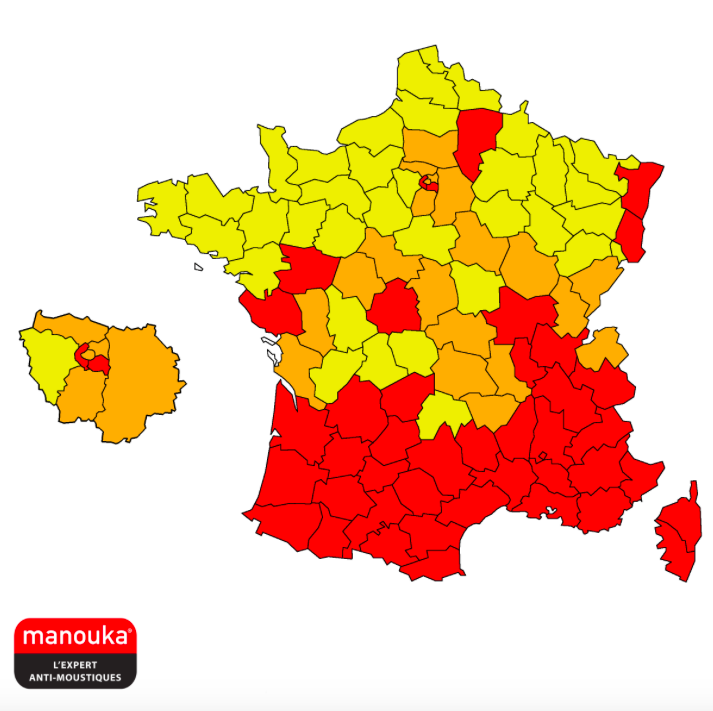
Recommendations from health authorities
Our tiger mosquitoes are not yet infected with chikungunia and dengue viruses, like their cousins in the tropics. Clearly the bombers are lined up on the runway but they are not yet carrying bombs.
However, the risk is real, especially if you are traveling. The tiger mosquito is also a vector of Zika, present since October 2015 in Colombia, Guatemala, Mexico, Panama, Paraguay, Venezuela, Brazil, Honduras, Senegal, Ivory Coast and Burkina Faso. The health authorities recommend that people traveling to Reunion, for example, to protect themselves against mosquito bites, including during the day, by using repellents for the skin and clothing, and by wearing long, loose clothing.
“If a person presents within 7 days of returning to mainland France with signs suggestive of dengue fever (joint pain, muscle pain, headache, rash with or without fever, conjunctivitis), he must consult a doctor and continue to protect against mosquito bites, including using a mosquito net if possible, so as not to transmit the disease in mainland France, if the tiger mosquito is present in the department, “advises the Ministry of Health. If you think you have seen a tiger mosquito in your town, you can also report it on the official portal www.signalement-moustique.fr.
Dengue, or “tropical flu”
Dengue fever, also called “tropical flu”, is a tropical hemorrhagic fever linked to an arbovirus, transmitted by the bite of a female tiger mosquito only. The World Health Organization (WHO) estimates the number of annual cases in the world at 50 million, including 500,000 cases of “hemorrhagic” dengue, ie which are fatal in more than 2.5% of cases. . Dengue is initially present in the tropics and subtropics of the world.
Symptoms appear 3 to 14 days (on average 4 to 7 days) after the infective bite. A flu syndrome is then observed affecting infants, young children and adults. There is no specific treatment. While dengue haemorrhagic fever is a life-threatening complication, early clinical diagnosis and prompt clinical management often save lives.
As the Health Organization (WHO) points out, “more than 70% of the disease burden attributable to this disease is found in Southeast Asia and the Western Pacific. In Latin America and the Caribbean, Both the incidence and severity of the disease have increased rapidly in recent years. Africa and the eastern Mediterranean have also experienced more epidemic outbreaks in the past decade. ” Lately, pally 1,300 cases of dengue have been confirmed in the north, west and south of Réunion since January 1, 2018
Chikungunya, “to become twisted”
Chikungunya is a viral disease also transmitted by the bite of a tiger mosquito. The name “chikungunya” comes from a verb in the Kimakonde language which means “to become crooked” in reference to the hunched appearance of those who suffer from joint pain. Indeed, theChikungunya is characterized by the sudden onset of fever, often accompanied by joint pain (often debilitating, but usually disappears after a few days or weeks).
Myalgia, headache, nausea, fatigue and rash have also been observed. Most patients recover well, but in some cases, joint pain persists for several months or even years. But let’s be honest, this remains theoretical in mainland France and the risks are extremely low for the moment.
How to distinguish a tiger mosquito?
Know already that the tiger mosquito is smaller than a 1 cent coin: it measures only a few millimeters and has a fairly slow flight that allows it to be crushed in flight. If you take a closer look you will see that it is black with white stripes on its legs and abdomen, earning it its nickname the tiger mosquito.
“Everyone, by modifying their behavior and adopting simple, non-restrictive actions, can participate in the fight against the proliferation of tiger mosquitoes and help prevent the introduction of dengue, chikungunya or zika in metropolitan France. In particular, it is very important to remove stagnant water, which allows mosquitoes to reproduce, around their homes, ”recommends the government.
In fact, accustomed to being born in small gites (plants retaining water), the tiger mosquito was able to easily colonize all kinds of breeding sites offered by the urban and peri-urban environment like cups under flower pots, watering cans, old tires, clogged gutters, etc…. The best solution to better guard against this is to empty all these small “water reservoirs” or to renew them at least once a week.
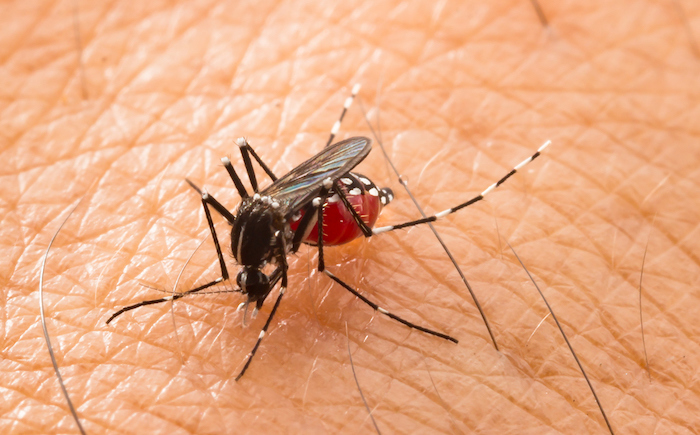
Photo source: frank600 / iStock
.







